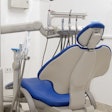
Medicine isn't a science. It's a lot of educated guessing from highly trained specialists doing their best to do what's right for the people they serve. What can make dentistry even more challenging is when patients are sitting in your chair looking to you for answers and their presentation offers no clear-cut solutions. Sometimes, it must initially seem as if you have barely enough evidence to treat a patient.
 Jen Butler, MEd.
Jen Butler, MEd.Instead of doing nothing in the face of making the wrong decision, let patients make the decision that's right for them. I suggest to my clients that they give their patient options, using a script similar to the following:
"You have a decision to make," you tell your patient. "One decision would be to get this fixed today as there is plenty of evidence that this tooth is going to need a [treatment] very soon."
Then you present another option, presenting it in steps that clear and easy to understand.
"The other option is for you to go the home-therapy route," you explain. "That means we will do [varnish, sealant, send you home with a prescription, a bottle of chlorhexidine mouthwash, a night guard] today, which are excellent preventive measures. Then at home you will follow an oral care regimen every day."
You can continue in this vein, keeping the focus on the patient.
"We will make an appointment for you in three months to check to see if things are working at home," you say. "If you are committed to doing these things, we may even be able to avoid this restorative work."
Then you finish by giving your patient the final decision.
"Which decision is right for you: Fix it today, or do the home therapy and come back in three months for a follow-up?"
By engaging in this conversation, you are doing several things:
“Let patients make the decision that's right for them.”
- Patients will trust you more, because you are providing them evidence and experiences of not taking their money -- something patients often complain of during a visit.
- You're potentially increasing production by capturing revenue for the preventive measure you diagnose and also charging for an office visit in three months.
- Patients appreciate the opportunity to fix their own problems with home care. You'll be surprised how patients will spend money on preventive tools they will use at home versus a filling.
I should also mention that you should have your documentation in order.
At the follow-up visit, if the patient's condition hasn't improved, my clients have found that the patient is much more likely to move forward with the original, restorative treatment. At that point, you can recoup the production you postponed.
Jen Butler, MEd, is the CEO and founder of JB Partners and has been working in the area of stress management and resiliency training for more than 25 years. Learn about her services at www.jenbutlerpartners.com, or contact her at [email protected].
The comments and observations expressed herein do not necessarily reflect the opinions of DrBicuspid.com, nor should they be construed as an endorsement or admonishment of any particular idea, vendor, or organization.



















